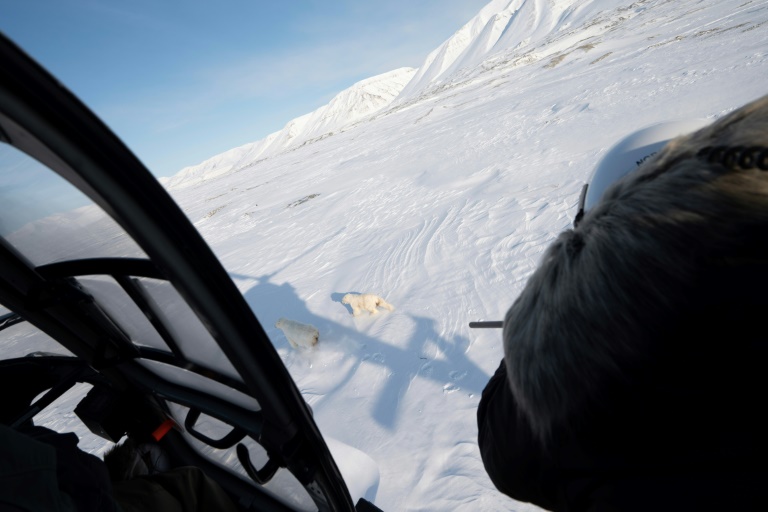The Perilous Task of Studying Polar Bears in the Arctic
Taking a blood sample from a polar bear is no small feat. These are among the most formidable predators on the planet, and the task requires precision, patience, and a deep understanding of their behavior. In the harsh environment of the Arctic ice floes, where wind chill can drop to minus 30°C, scientists face an array of challenges to study these animals.
The process begins with locating the bear, followed by a sedative dart fired from a helicopter. Once the bear is immobilized, a veterinarian carefully approaches on foot to fit it with a GPS collar. This step is crucial for tracking the movements of the bears, especially the females, who are more likely to be monitored due to the design of the collars. Male polar bears, with their thick necks, often shake off the collars, making them less suitable for this method.
After securing the collar, the team performs a delicate incision into the bear’s fat layer to insert a heart monitor. This device records the bear’s body temperature and heart rate throughout the year, providing valuable data on how these animals adapt to changing environmental conditions. Researchers can then analyze the energy expenditure of female bears as they navigate their hunting grounds and rest in their dens.
In addition to monitoring movement, scientists also collect biopsies of fat tissue. These samples allow researchers to test for the presence of pollutants, including PFAS chemicals—often referred to as “forever chemicals” because they persist in the environment for years. These substances, found in everything from cosmetics to nonstick cookware, accumulate in the air, water, and food chain, eventually ending up in the bodies of both wildlife and humans.
Changing Diets and Behaviors
The research conducted by the Norwegian Polar Institute (NPI) has revealed significant changes in the diets of Svalbard’s polar bears. As the Arctic ice retreats, the bears are adapting by consuming more land-based food sources. While they still hunt seals, they have also been observed eating eggs, reindeer, and even seaweed, despite the lack of nutritional value.
Jon Aars, the lead scientist of the NPI’s polar bear program, notes that seals remain a critical part of their diet. Even though the bears may only have three months to hunt, they can gather about 70% of their annual food needs during that time. This efficiency helps explain why many bears are still in good condition despite the loss of sea ice.
However, the future is not without its challenges. If the availability of seals continues to decline due to climate change, the bears may struggle to survive. Scientists warn that while polar bears have shown some resilience, there is a limit to their ability to adapt.
The Role of Longevity and Adaptation
One factor that gives polar bears an advantage is their long lifespan. These animals learn from experience throughout their lives, which allows them to develop strategies for survival. This capacity for adaptation is a key reason why some populations are faring better than expected.
Despite these positive signs, the impact of pollution remains a pressing concern. Recent findings suggest that levels of certain pollutants in polar bears have decreased over the past few decades, thanks to stricter regulations. However, the variety of pollutants has increased, with more types of chemical substances now being detected in their bodies.
Heli Routti, a Finnish ecotoxicologist, has tracked this trend over her 15-year involvement with the program. She notes that while the concentration of regulated pollutants has declined, the emergence of new chemicals poses a growing threat. PFAS, in particular, are a cause for concern due to their persistence in the environment and potential health risks to both wildlife and humans.
The Broader Implications
The research conducted by the NPI contributes to the Arctic Monitoring and Assessment Programme (AMAP), which plays a vital role in shaping policies on environmental protection. By analyzing the data collected from polar bears, scientists can provide insights into the broader impacts of pollution and climate change on the Arctic ecosystem.
As the world continues to grapple with the effects of global warming, the study of polar bears offers a glimpse into the complex interactions between environmental change, animal behavior, and human activity. The ongoing efforts of researchers like Rolf Arne Olberg, Marie-Anne Blanchet, and Laura Pirard highlight the importance of understanding these dynamics to protect one of the most iconic species of the Arctic.






